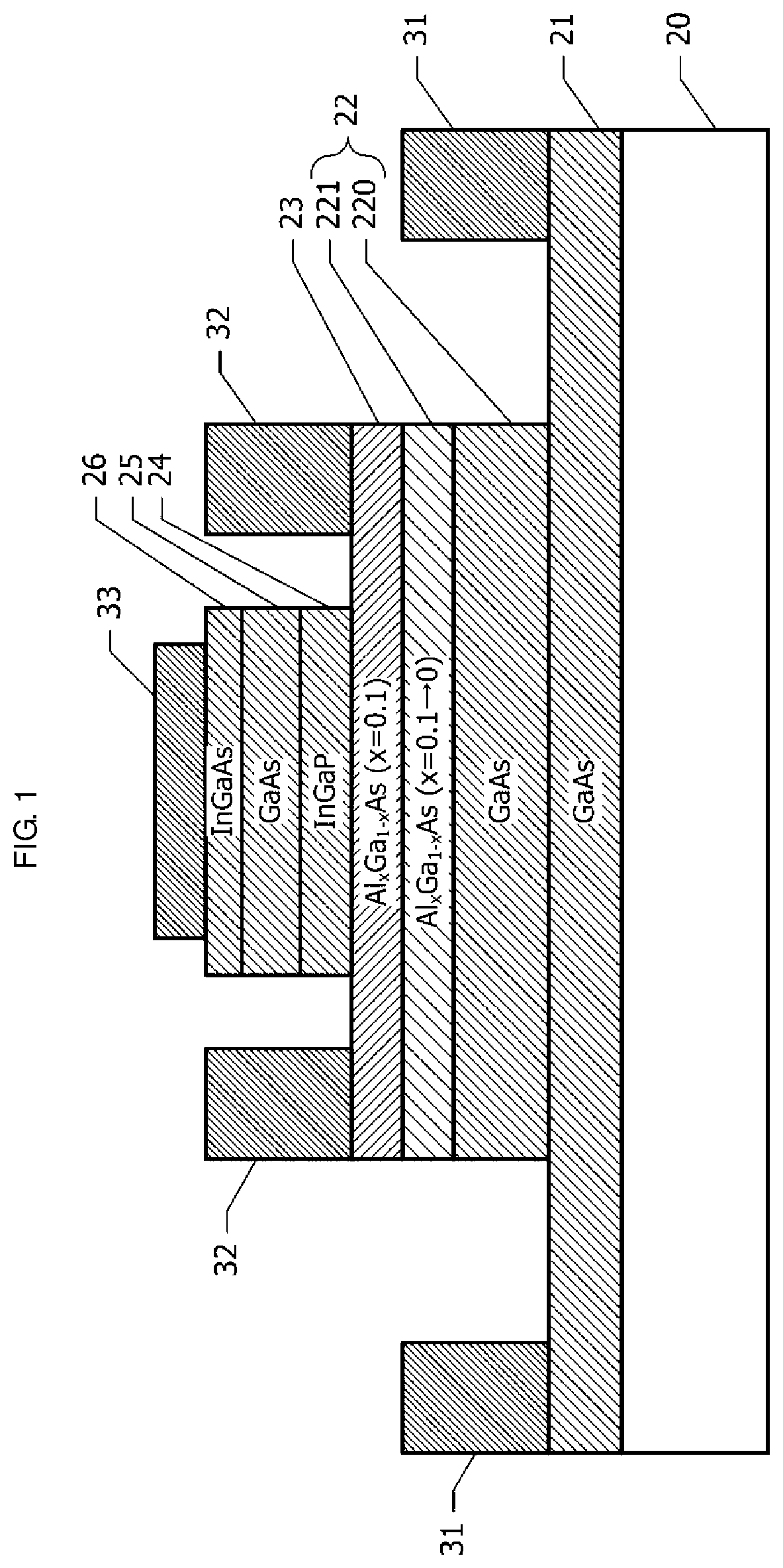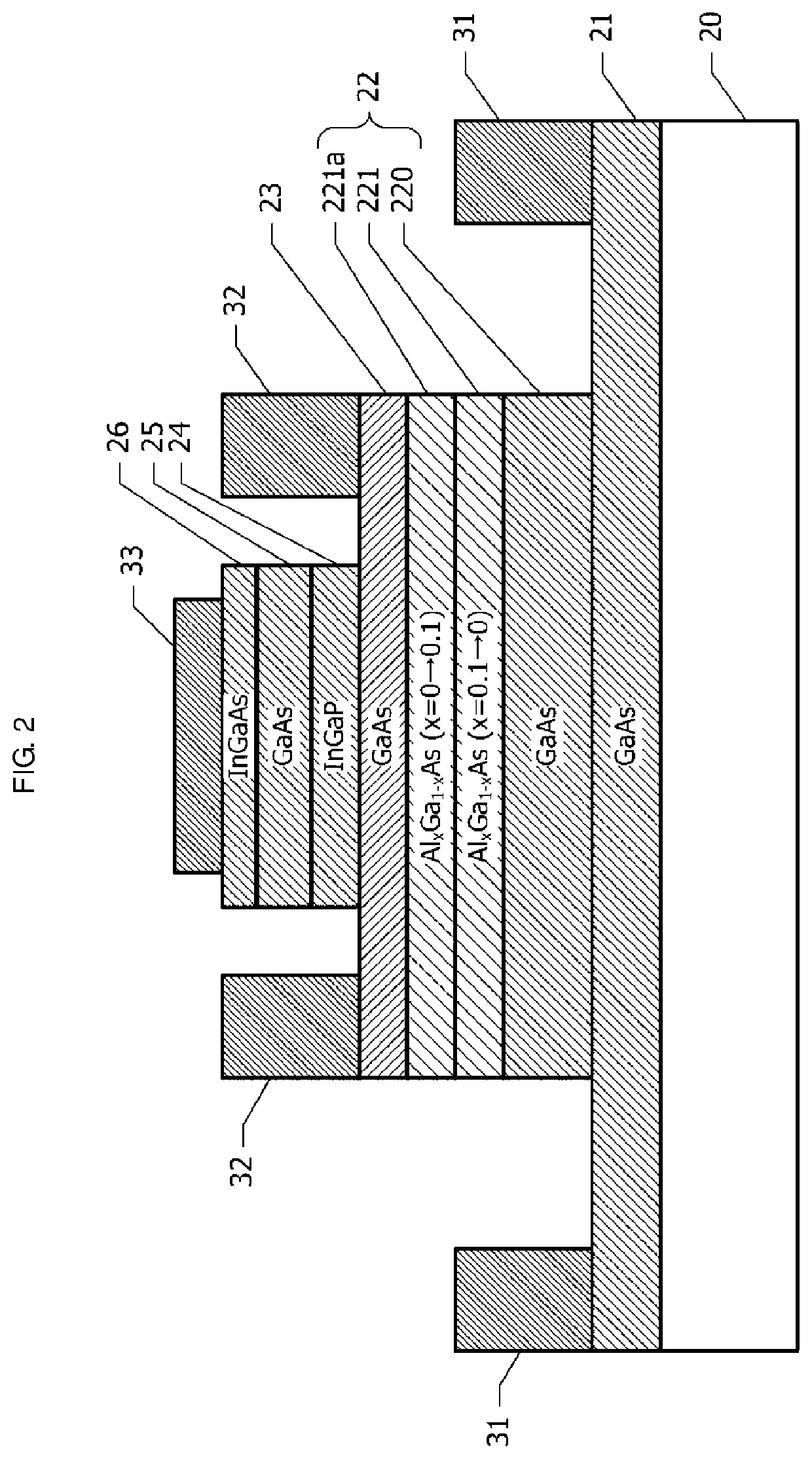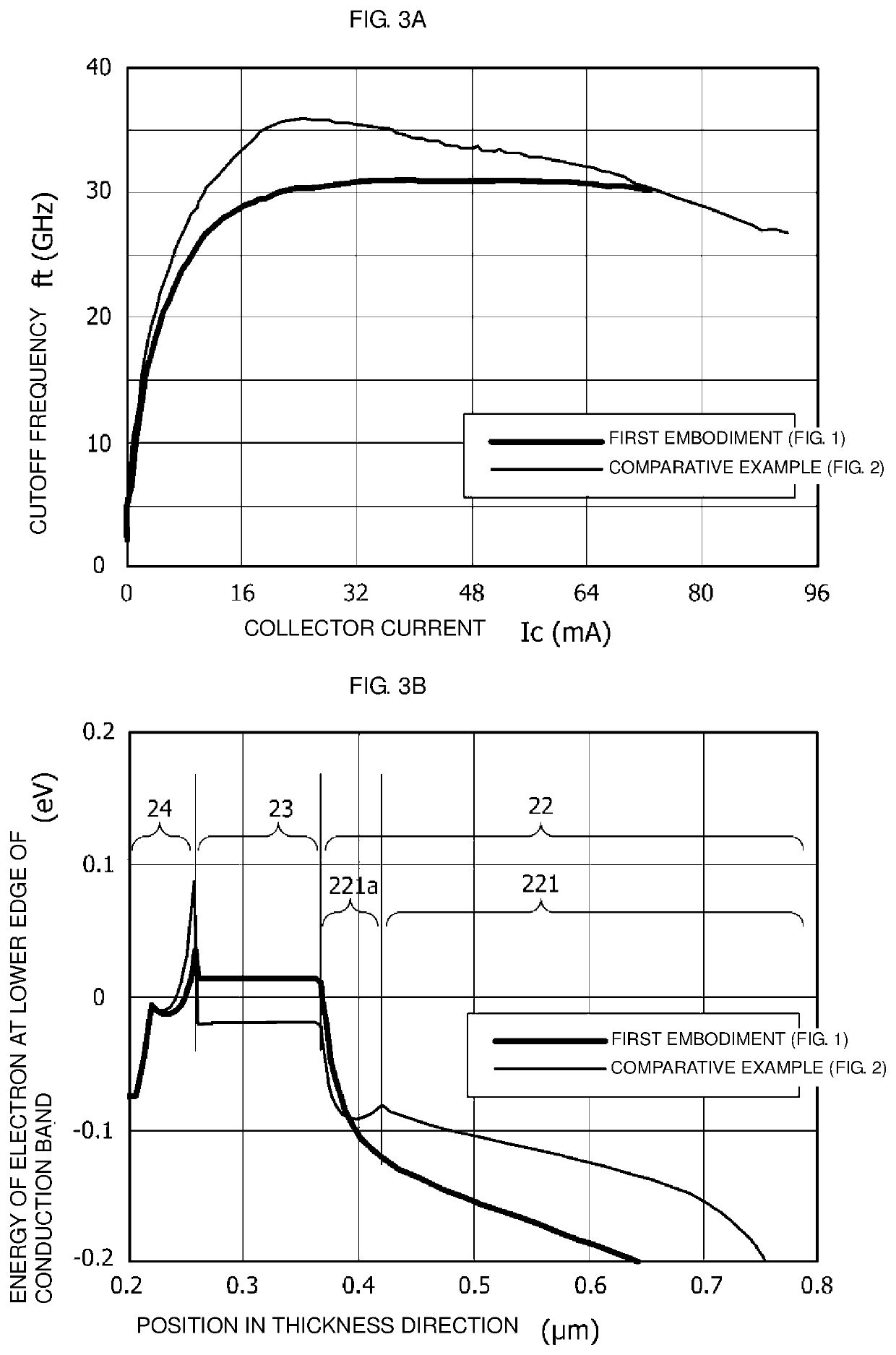Heterojunction bipolar transistor
a bipolar transistor and junction technology, applied in the direction of basic electric elements, electrical equipment, semiconductor devices, etc., can solve the problems of reducing affecting unable to effectively achieve the effect of improving the efficiency of dhbts, so as to improve the efficiency of power amplifiers, reduce collector resistance, and increase output
- Summary
- Abstract
- Description
- Claims
- Application Information
AI Technical Summary
Benefits of technology
Problems solved by technology
Method used
Image
Examples
first embodiment
[0040]An HBT according to a first embodiment will be described with reference to FIGS. 1 to 3B.
[0041]FIG. 1 is a sectional view of an HBT according to the first embodiment. A sub-collector layer 21 made of n-type GaAs is disposed on a substrate 20 made of semi-insulating GaAs. A collector layer 22 and a base layer 23 are stacked on a partial region of the sub-collector layer 21.
[0042]The collector layer 22 includes two layers of a lower collector layer 220 disposed on the side closer to the sub-collector layer 21 and an upper collector layer 221 disposed on the lower collector layer 220. The lower collector layer 220 is made of n-type GaAs. The upper collector layer 221 is made of n-type AlxGa1-xAs. The upper collector layer 221 is a graded semiconductor layer in which an AlAs mixed-crystal ratio x linearly changes from 0.1 at the interface closer to the base layer 23 to 0 at the interface closer to the sub-collector layer 21. In the graded semiconductor layer, the electron affinity...
second embodiment
Modification of Second Embodiment
[0091]Next, modifications of the second embodiment will be described.
[0092]In the second embodiment, the AlAs mixed-crystal ratio x of the base layer 23 (FIG. 4) made of p-type AlxGa1-xAs is uniform with respect to the thickness direction. Alternatively, the AlAs mixed-crystal ratio x of the base layer 23 may be changed in the thickness direction. In such a case, the electron affinity is preferably gradually increased from the emitter layer 24 toward the collector layer 22. Preferably, for example, the AlAs mixed-crystal ratio x of the base layer 23 is linearly changed from 0.07 on the emitter layer 24 side to 0.05 on the collector layer 22 side. When the electron affinity has such a distribution, electrons can be drifted in the base layer 23. Consequently, the cutoff frequency ft can be improved.
[0093]In the second embodiment, the interface between a graded semiconductor layer made of AlGaAs and a uniform composition layer made of GaAs coincides wit...
third embodiment
[0099]Next, an HBT according to a third embodiment will be described with reference to FIG. 10. Hereinafter, descriptions of configurations that are common to those of the HBT (FIG. 4, etc.) according to the second embodiment will be omitted.
[0100]FIG. 10 is a sectional view of an HBT according to the third embodiment. In the third embodiment, an intermediate layer 27 made of a compound semiconductor that does not contain Al as a group III element is disposed between a collector layer 22 and a base layer 23. The intermediate layer 27 is made of, for example, n-type GaAs having a Si concentration of 3×1015 cm−3. The intermediate layer 27 has a thickness of, for example, 3 nm or more and 10 nm or less (i.e., from 3 nm to 10 nm).
[0101]In the third embodiment, after the collector layer 22 is epitaxially grown, the growth temperature is decreased while the intermediate layer 27 is grown. The base layer 23 is grown at a temperature lower than the growth temperature of the collector layer ...
PUM
| Property | Measurement | Unit |
|---|---|---|
| voltage | aaaaa | aaaaa |
| voltage | aaaaa | aaaaa |
| current | aaaaa | aaaaa |
Abstract
Description
Claims
Application Information
 Login to View More
Login to View More - R&D
- Intellectual Property
- Life Sciences
- Materials
- Tech Scout
- Unparalleled Data Quality
- Higher Quality Content
- 60% Fewer Hallucinations
Browse by: Latest US Patents, China's latest patents, Technical Efficacy Thesaurus, Application Domain, Technology Topic, Popular Technical Reports.
© 2025 PatSnap. All rights reserved.Legal|Privacy policy|Modern Slavery Act Transparency Statement|Sitemap|About US| Contact US: help@patsnap.com



